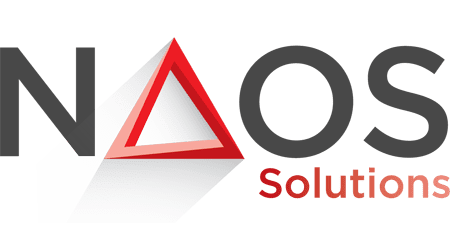Forget the image of boiler rooms and endless cold calls. Modern telesales is a data-driven, personalized approach. That is why 69% of buyers report that a single call convinced them to purchase.

The key is knowing how to make that call count. In this guide, we’ll tell you all about implementing the most effective modern telesales strategies.
CREATING EFFECTIVE CONTACT LISTS
In telesales, the quality of your contact list speaks volumes about your sales strategy.
Gone are the days of mindlessly dialing numbers. Modern telesales teams build hyper-targeted lists to make sure each call has the potential to convert.
Let’s look at effective contact list creation for B2B and B2C businesses.
Creating a Business-to-Business Contact List For Telesales
B2B Contact List Creation targets businesses, focusing on professional roles, industry-specific needs, and company-related data. The data sources are often professional networks, business directories, and industry databases.
Legal Considerations for B2B Contact Lists
Typically, B2B communications are subject to fewer restrictions than B2C. For instance, it’s permissible in many jurisdictions to contact businesses without prior consent, provided the communication is relevant to their professional role.
- United States: The CAN-SPAM Act allows unsolicited B2B emails with compliance requirements (opt-out, accurate sender info) for emails. The TCPA permits unsolicited calls to other businesses without prior consent, provided they comply with the Do Not Call (DNC) list and other TCPA requirements. However, calls made using autodialers or pre-recorded messages to business phone numbers still require prior consent.
- European Union: The GDPR and ePrivacy Directive allow unsolicited B2B emails if they are relevant to recipients’ roles. However, those emails must involve legitimate interest and opt-out options. Telemarketing rules vary; some countries, like Germany, still require prior consent, even for B2B communications.
- United Kingdom: The Privacy and Electronic Communications Regulations (PECR) allow unsolicited B2B telemarketing emails and calls. However, businesses must screen their call lists against the Corporate Telephone Preference Service (CTPS) and respect opt-out requests.
- Australia: The Spam Act permits unsolicited B2B emails with compliance requirements. The Do Not Call Register Act allows B2B calls unless listed on the Do Not Call Register.
- Canada: Canada’s Anti-Spam Legislation (CASL) permits unsolicited B2B emails. The National Do Not Call List (DNCL) allows B2B calls without prior consent. Still, businesses must not call numbers listed on the National DNCL unless an exemption applies (e.g., existing business relationship).

Practical Considerations for B2B Communications
Even in jurisdictions where B2B communications are more permissible, best practices include:
- Ensuring the content is relevant to the recipient’s business role.
- Including a clear and easy way to opt out of future communications.
- Providing accurate sender/caller information and maintaining transparency.
Following these guidelines allows you to manage B2B communications while complying with local regulations effectively.
Tools to Collect and Segment B2B Data
LinkedIn Sales Navigator allows you to filter contacts by industry, job title, company size, and more. Sales professionals who use LinkedIn Sales Navigator see 42% larger deals than those who don’t.
Platforms like ZoomInfo, Hoovers, and Data.com provide valuable data on your target companies and decision-makers. Combine this with LinkedIn Sales Navigator to create an industry-specific contact list with guaranteed leads.
Segmentation and management matter. You can’t treat all contacts equally. Instead, segment your B2B list based on company size, industry, job title, country, or the specific pain points your product/service solves. This highly personalized approach is your key to increasing sales.
Creating a Business-to-Consumer Contact List
B2C lists focus on individual consumers, where personalization is critical. Data sources include social media interactions, website analytics, and direct consumer engagements. The data is more varied than in a B2B environment and includes behavioral insights, personal preferences, and demographic information.
Consumer data changes rapidly. Regularly updating your contact lists to maintain accuracy and relevance is essential. This ensures that your telesales efforts always target the right audience with up-to-date information.
Legal Considerations for B2C Communications
B2C communications are more heavily regulated to protect consumer privacy. Laws such as the GDPR in Europe and the CAN-SPAM Act in the USA require explicit consent from individuals before contacting them for marketing purposes.
Consumers have the right to opt-out, and strict rules exist on how their data can be collected, stored, and used.

Strategies to Gather Contact Information (First Party Data)
First-party data is information you collect directly from your audience through your channels. This includes data from your website, CRM system, email marketing, and direct interactions with customers. The advantage of first-party data is its accuracy and relevance to your business.
- Website Sign-Ups: Encourage visitors to subscribe to newsletters or create accounts. Offer incentives like discounts, e-books, or exclusive content to gather email addresses and phone numbers.
- Social Media Engagement: Run campaigns and contests on platforms like Facebook, Instagram, and TikTok. Collect contact details through forms and direct messages.
- Surveys and Polls: Use online surveys and polls to gather information directly from consumers. Ensure there is a value exchange, such as entry into a giveaway or access to special reports.
- Loyalty Programs: Implement loyalty programs that require registration. This not only gathers contact details but also tracks purchase history and preferences.
Opt-In Best Practices
Opt-in is the process by which consumers give their explicit consent to receive marketing communications. In Europe and the USA, opt-in consent does not expire unless the consumer opts out. However, it’s good practice to refresh consent every 24 months to ensure the data remains accurate and relevant.
Here is an example of a straightforward Opt-In Process:
- Sign-Up Form: Include a sign-up form on your website with fields for name, email, and preferences.
- Clear Consent Request: Next to the email field, include a checkbox (unchecked by default) with a statement like, “I agree to receive marketing communications from [Your Company].”
- Confirmation Email: After the user submits the form, send a confirmation email with a link they must click to verify their subscription.
- Welcome Email: Once they confirm, send a welcome email with a brief overview of what they can expect and a special offer as a thank-you for subscribing.
Understanding Second-Party Data
Second-party data is another organization’s first-party data shared through a partnership. This data is often more reliable than third-party data because it comes directly from the source.
Second-party data enriches existing contact lists by providing additional insights and enhancing targeting capabilities. This data is often obtained through direct partnerships where both parties agree to share beneficial data for both.
For example, a fitness equipment company partners with a health and wellness blog. The blog collects data on its readers, such as email addresses and fitness interests. The fitness company uses this second-party data to target individuals interested in fitness-related content, thus creating a highly relevant telesales list.
Ensure you access legally compliant second-party lists by establishing clear agreements that outline data usage, adhering to data protection regulations like GDPR and CCPA, and partnering only with reputable organizations.
To be legally compliant and transparent, the other company should mention the possibility of data sharing with partners in their opt-in process. For example, they must insert in their data-collection form:
- A Primary Consent Checkbox, unchecked by default: “I agree to receive marketing emails from [Your Company].”
- A Secondary Consent Checkbox, unchecked by default: “I agree that [Your Company] may share my information with selected partners for marketing purposes.“
- A Link To The Privacy Policy, where users can read detailed information about how their data will be used and shared: “For more details on how we handle your data, please see our [Privacy Policy].”
- Example Language for Privacy Policy – Data Sharing with Partners: “We may share your data with selected partners who align with our business interests. These partners may use your information to offer relevant products and services that interest you. We ensure our partners comply with data protection regulations and use your data only for specified purposes.“
- Example Language for Privacy Policy – Your Choices: “You can opt out of data sharing with our partners anytime. To do so, please update your preferences in your account settings or contact us directly at [contact information].”

Use Third-Party Data To Segment Your Contact Lists
Third-party data is collected by entities with no direct relationship with the consumer and is often aggregated from various sources. Third-party data does not typically include personal details like emails and phone numbers unless specifically obtained through consent-based mechanisms.
This data can include:
- Demographic Information: Age, gender, income level, and education.
- Behavioral Data: Online behavior patterns, purchase history, browsing habits.
- Psychographic Data: Interests, hobbies, lifestyle choices.
To incorporate third-party data, consider using a Customer Data Platform (CDP) that integrates data from various sources, ensuring a comprehensive view of your contacts.
When using third-party data, it’s crucial to comply with data protection regulations. Ensure that the data sources are reputable and that the data was collected and shared in compliance with laws such as GDPR and CCPA.
How to Segment Your Contact Lists:
- Integrate with Existing Data: Combine third-party data with your first-party data to enrich customer profiles. This integration helps you better understand your contacts.
- Create Detailed Segments: Use the additional insights from third-party data to create more detailed and precise segments. For example, segment your audience based on demographic details (e.g., age and income), behavioral data (e.g., purchase history), and psychographic data (e.g., interests and lifestyle).
- Targeted Campaigns: Develop targeted marketing campaigns tailored to each segment. For instance, you can create specific offers for different demographic groups or customize messaging based on behavioral data.
- Analyze and Optimize: Continuously analyze and optimize your segments’ performance based on the results. Use metrics like conversion rates and engagement levels to refine your segmentation strategy.
Data brokers like Experian or Acxiom provide extensive consumer and business information.
Telesales in the digital age is dynamic and data-driven. To thrive, teams must work closely with the marketing departments to build targeted B2B or B2C lists and gather data. Understanding the differences between leveraging first, second, and third-party data can significantly enhance telesales efforts.
DATA-DRIVEN TELESALES TECHNIQUES
High-performing sales teams treat data like pure gold, and there’s a reason why. Data analytics empower them to transform raw information into actionable strategies. It’s your key to more personalized pitches, higher-quality leads, and increased conversions.
Here’s what you need to do with your data.

Tailoring Sales Pitches
Customer profiling never disappoints. Analyze customer data to create detailed buyer personas – their pain points, motivations, and preferred communication styles. Your pitches should resonate with each persona differently.
But don’t take our word for it. Studies show that personalized sales pitches increase the likelihood of closing a deal by 16%.
With such insights, you can proactively offer solutions before the customer realizes they need them.
Leveraging Tools for Personalized Sales Pitches
In recent years, new sales-enabling tools have appeared, boosted by Artificial Intelligence, such as Humantic.ai, Crystal, or Regie.ai.
They provide deep personality insights into individual prospects’ personalities and preferences. These tools use AI-driven personality assessments to understand the nuances of each prospect’s communication style, decision-making process, and behavioral tendencies.
They analyze public data, social media profiles, and other digital footprints to create detailed personality profiles of your prospects. They highlight traits such as openness, conscientiousness, extroversion, agreeableness, and emotional stability.
Sales teams can tailor their approach, choosing the right tone, messaging, and engagement strategy for each individual.
Those tools also provide Behavioral Prediction. With predictive analytics, they can anticipate how a prospect might respond to different sales approaches. They identify the best times to contact, the most effective types of follow-up, and the likelihood of a prospect making a purchase decision.
These predictions enable sales teams to optimize their outreach strategies, ensuring that each interaction is timely and relevant.
Lead Scoring and Nurturing
Use tools like LeadSquared, Marketo, or Pardot to assign points or scores to your leads based on their demographics, behavior, and engagement level. With this scoring model, prioritize high-value prospects and prioritize those most likely to convert. Companies that use lead scoring see a 77% increase in lead generation ROI.
You can also nurture your leads with relevant content, product demos, or free trials based on their stage in the buying journey. Nurtured leads produce at least a 20% increase in sales opportunities compared to non-nurtured leads.

Optimizing Conversion Rates
Experiment with different sales scripts, opening lines, or objection-handling techniques to determine which variations resonate most with your prospects. Focus on the variations that lead to more engaged conversations and appointments.
TRAINING TELESALES TEAMS FOR PEAK PERFORMANCE
Data and tools are potent sidekicks, but any telesales team’s success ultimately hinges on its members’ skills. Training your team can completely transform the effectiveness of your sales strategy.
Skill Development
Effective communication is the first skill your team should know, which goes beyond just speaking clearly.
It involves active listening, empathy, and adapting the message to resonate with diverse prospects. Research shows that sales reps who practice active listening close 31% more deals.
Negotiation is another crucial skill. Successful telesales professionals are skilled at building rapport, finding the prospect’s needs, and finding win-win solutions.
We recommend training your telesales team about proven sales methodologies like SPIN Selling, Sandler Selling, or Challenger Sales.
Building Resilience in Sales Teams
Telesales is not for the faint of heart. Rejection is an inevitable part of the job, and the ability to bounce back from setbacks separates high performers from those who struggle.
Analyze cold calls to discover what went wrong and use that feedback during one-to-one coaching sessions to improve their approach.
These personalized sessions provide an opportunity for individual feedback and development tailored to each sales rep’s strengths and areas for improvement. Regular coaching helps sales reps develop the skills and mindset to handle rejection constructively.
During these sessions, personalized feedback, skill development, and confidence-building equip sales reps to navigate setbacks better and view them as learning opportunities, ultimately enhancing their overall performance.
As a telesales leader, you must foster a team environment where discussing challenges and setbacks is okay. Train them to celebrate wins instead of mulling over losses – optimistic salespeople outsell pessimistic salespeople by 56%!

Incentives and Motivations
Without the right motivation, there’s no reason for your telesales team to go above and beyond. A well-structured incentive program can be the key to unlocking your team’s full potential.
Let’s look at a few effective ways:
- Gamification: Turn daily tasks into a game with leaderboards, badges, and rewards. Gamification can increase employee engagement by 48%.
- Appreciation: A simple “thank you” or a shout-out in a meeting can go a long way in boosting morale.
- Career Advancement: Offer opportunities for promotion and increased responsibility to those who consistently excel.
- Financial Incentives: Bonuses, commissions, or profit-sharing can be powerful motivators but should be tied to specific performance metrics.
Incentive programs truly work – there’s research to back up. Studies have shown that well-designed incentive programs can increase sales by up to 44%. Your sales reps will be more motivated and focused, and you may also see a 41% reduction in absenteeism and 59% in turnover.
INTEGRATING TELESALES WITH OTHER SALES CHANNELS
The modern buyer’s journey is rarely linear. Prospects engage with brands through various channels, such as social media, email, websites, and in-person events.
To maximize sales potential, businesses must embrace an omnichannel approach, where all channels contribute to a unified customer experience.
Omnichannel Sales Strategies
Omnichannel strategies prioritize the customer, providing a consistent experience across all touchpoints. This builds trust and loyalty, so omnichannel customers have a 30% higher lifetime value. Plus, a unified view of the customer allows personalized outreach and tailored solutions.
So, how would a telesales team implement such a strategy?
Telesales reps can directly engage leads from other channels. For instance, if a potential customer visits a company’s website, telesales reps can follow up with a quick call to answer any questions and guide them further down the sales funnel. They can also use data from all channels to identify and prioritize high-potential leads.
Coordination with Digital Marketing
Let’s face it: the lines between sales and marketing are blurring. The best action is to align your telesales efforts with digital marketing campaigns. This will result in a powerful synergy that boosts lead generation, nurtures prospects, and drives revenue.
Companies with aligned sales-marketing teams see an average of 32% annual revenue growth.
That means telesales and marketing teams should collaborate to define common objectives and KPIs. This ensures everyone is on the same page regarding overarching goals.
Marketing generates leads using digital channels (content marketing, social media, paid ads, etc.). Telesales can then qualify these leads through personalized conversations and pass them to sales reps for closing.
Leveraging Customer Relationship Management (CRM) Systems
Customer Relationship Management (CRM) is undoubtedly the backbone of modern telesales.
These systems are a central hub for customer data and interactions across all channels. CRMs allow telesales teams to track leads, personalize outreach, and analyze performance metrics – all in one place.
Companies using CRM systems see an average of 30% increase in sales, a 34% increase in productivity, and a 42% boost in customer retention.
By integrating CRM data with other tools like email marketing and social media, telesales teams get a 360-degree view of the customer. The result is simply more targeted and effective communication.
CONCLUSION
Telesales in the digital age is dynamic and data-driven. To thrive, teams must embrace targeted list building, gather data, invest in training, and implement omnichannel strategies.
Don’t get left behind – partner with NAOS CX to take your telesales team from good to unstoppable.

